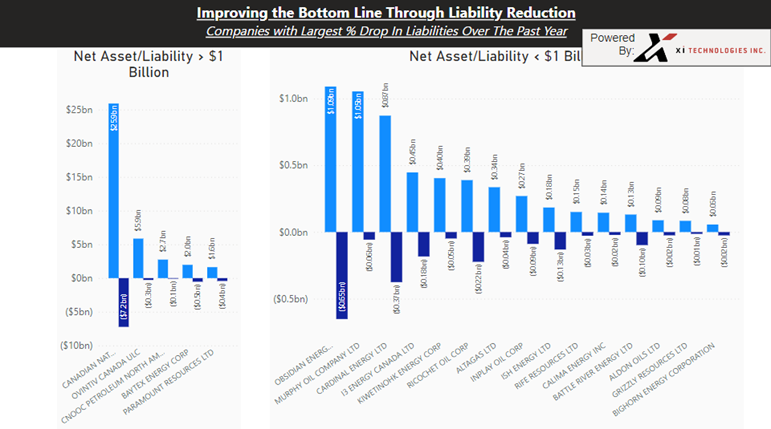WTTW – “Liability Limbo”: Improving The Bottom Line With Liability Reduction
April 9, 2024
In keeping with our recent theme of cleaning up liabilities, this week we dig deeper into liabilities at a company level. Although the AER and BCER ended their practice of providing third-party liability management rating (LMR) reports at the end of 2020, it continues to be a component of the holistic analysis being completed by both the AER and BCER when reviewing acquisition and/or divesture work, as well as in assigning Peer Group rating in Alberta.
As the industry embraces this more comprehensive approach to liability management, the question arises: “Does Licensee Liability Rating (LLR) still matter?”. XI has noted that while the actual LLR ratio itself is not a final determining factor for transactions, the costs assigned are quite often used to determine possible financial impacts of any transaction, including the caveat of possible gaps in the LLR calculation when assessing ARO (download our case study, “LLR vs ARO” for more details).
To gain a comprehensive understanding of companies’ efforts in reducing their overall liabilities across the board, utilizing the costs outlined in the Directives enables us to employ a standardized and accepted cost model.
Looking at the liability reduction work completed during 2023, we can see that companies have taken different strategies in their methods used to reducing their asset over liability ratio.
Figure 1: Interactive Dashboard showing Top 10 Companies by LLR %.
A&D Strategies for Changing LLR
Some companies have divested a large proportion of their assets, which in turn reduces their liabilities but also reduces overall company value. Others have increased their production, either organically or via acquisitions, to increase their asset value to impact that ratio. In some cases, these acquisitions have been instrumental in increasing asset value without increasing liability costs by an equivalent measure. At the end of 2023, there were 65 companies who managed to double their production values without doubling their liability obligations.
Although increasing production or divesting of liabilities are ways of reducing the LLR ratio, spending dollars on clean-up to reduce the overall liability obligations should also be included. Based on XI’s data, 188 companies reduced liability obligations by more than 10% of what was calculated for those assets in 2022.
Implementing proactive well management practices, enables companies to significantly reduce future liabilities associated with well abandonment and reclamation. This entails regular maintenance, monitoring, and early identification of wells nearing the end of their productive life along with upfront identification of acquisitions or divestitures to minimize this obligation. Timely decommissioning and reclaiming of these wells help mitigate potential environmental risks and minimize future financial obligations.

In summary, in the dynamic and challenging landscape of the Western Canadian Sedimentary Basin, effective liability reduction strategies are vital for improving the bottom line of oil and gas companies. Embracing proactive well management practices, leveraging innovative technologies, fostering collaboration with stakeholders, and prioritizing compliance and risk management, enhance profitability while advancing environmental stewardship and sustainable development goals. This approach not only mitigates financial risks but also position companies as leaders in responsible resource development, driving long-term value creation for shareholders, communities, and the environment.
—
Join us for our ARO Manager for Financial Tracking and Reporting Webinar:
April 25th 10:00am – 11:00am (MST) – Register Now to reserve your spot!
Each week, XI Technologies uncovers trends and insights using our enhanced data and software focused on the WCSB. If you’d like Word to the Wise delivered directly to your inbox, subscribe here. For more tips and to learn about how XI’s AssetSuite can help with your high-level analysis visit XI’s website or contact XI for a demo.